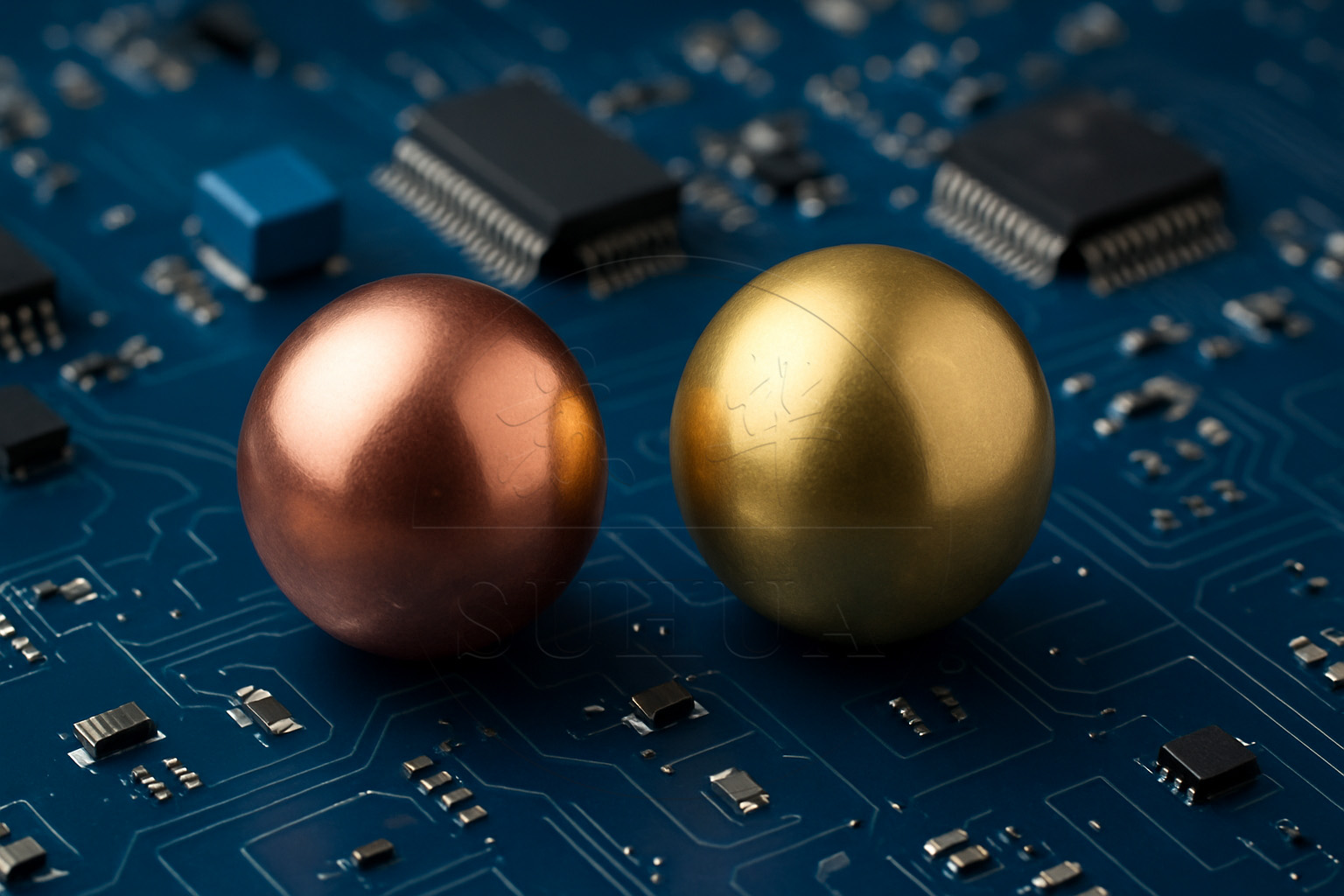
 Home > News
Home > News  In the field of industrial spheres, electrical conductivity is often a decisive factor in material selection. Although both copper balls and brass balls belong to the copper-based family, their conductivity differs significantly. Copper balls (pure copper) consistently outperform brass balls (copper-zinc alloy) in electrical applications. This distinction arises from differences in purity, crystal structure, electron migration, corrosion resistance, and long-term stability.
In the field of industrial spheres, electrical conductivity is often a decisive factor in material selection. Although both copper balls and brass balls belong to the copper-based family, their conductivity differs significantly. Copper balls (pure copper) consistently outperform brass balls (copper-zinc alloy) in electrical applications. This distinction arises from differences in purity, crystal structure, electron migration, corrosion resistance, and long-term stability.
Copper Balls: Produced from high-purity electrolytic copper, with Cu content ≥ 99.9%. The abundance of free electrons allows for extremely low resistivity (≈ 1.7 μΩ·cm), making it one of the most conductive industrial metals.
Brass Balls: An alloy of copper and zinc, with Zn content typically 5%–40%. Alloying introduces lattice distortion and impurity scattering, reducing conductivity to about 25%–40% of pure copper.
Copper: Features a face-centered cubic (FCC) structure with minimal lattice defects, enabling efficient electron mobility.
Brass: Due to zinc atoms of different radii, lattice irregularities and dislocations increase, causing more scattering of electrons and lowering conductivity.
Thus, copper behaves like a “highway” for electrons, while brass resembles a “rough road.”
Copper Balls: Form a dense Cu₂O oxide layer that protects against further corrosion, maintaining stable electrical conductivity over time.
Brass Balls: Prone to dezincification in humid or ammonia-rich environments, leading to porous, brittle structures and degraded conductivity.
Copper: Thermal conductivity ≈ 401 W/m·K, enabling rapid heat dissipation in electrical systems and preventing overheating.
Brass: Thermal conductivity ≈ 120 W/m·K, less efficient in high-power applications, potentially causing heat accumulation and performance issues.
Copper Balls: Softer, more ductile, best suited for high-precision electrical contacts and components.
Brass Balls: Stronger and more wear-resistant, suitable for valves, bearings, and decorative applications.
Copper Balls: Electrical contacts, relays, power distribution, conductive slip rings, telecommunication devices.
Brass Balls: Mechanical components, valves, locks, decorative items, medium-precision applications.
While copper balls are more expensive, their high conductivity reduces energy loss, increases system efficiency, and extends service life, offering higher long-term value. Brass balls remain cost-effective for mechanical uses where conductivity is not critical.
As a professional B2B supplier, we provide both copper and brass balls with customized diameters, precision grades, tolerance levels, and surface treatments. For example:
Electrical use: High-precision copper balls with Ra ≤ 0.05 μm for minimal contact resistance.
Mechanical use: Brass balls with anti-rust oil or nickel plating for durability.
Copper balls conduct electricity better than brass balls due to their higher purity, orderly crystal structure, smoother electron migration, superior corrosion resistance, and higher thermal conductivity. For critical electrical and electronic applications, copper balls are the preferred choice. Meanwhile, brass balls remain valuable in structural and decorative industries where strength and wear resistance take priority.
View More(Total0)Comment Lists